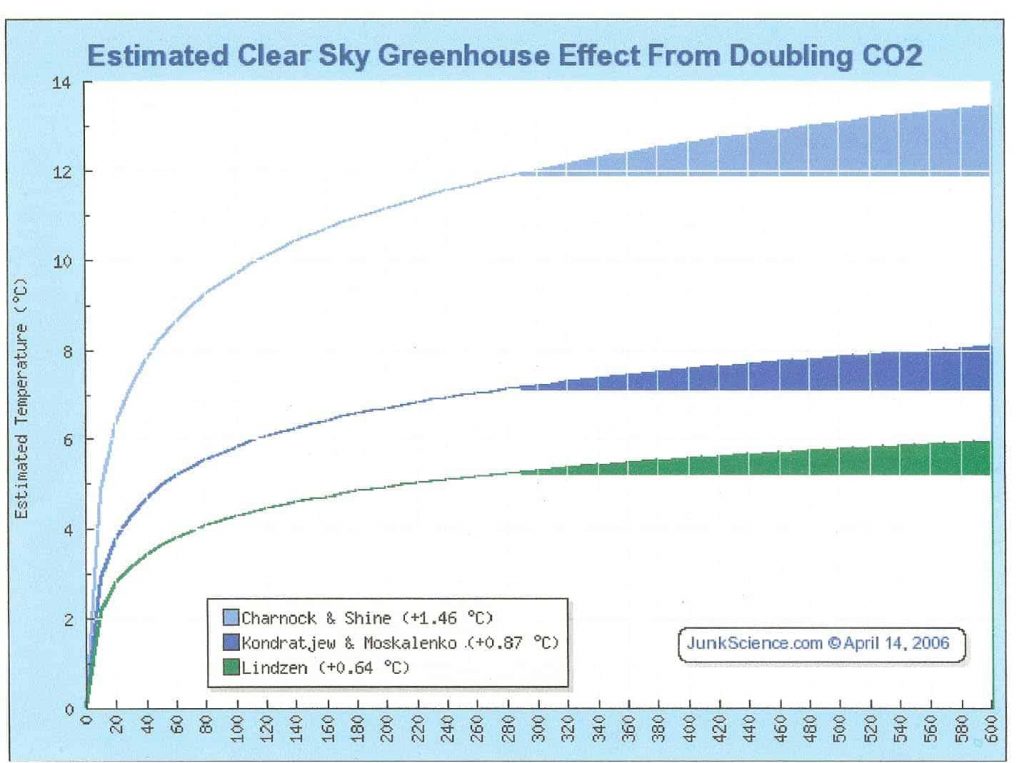Svante Arrhenius
In 1896, Svante Arrhenius, started the debate on the effect of atmospheric carbon dioxide concentration on global temperature with his original work on atmospheric gases, On the Influence of Carbonic Acid upon the Temperature of the Ground in which he stated that “if the quantity of carbonic acid [carbon dioxide] increases in geometric progression, the augmentation of the temperature will increase nearly in arithmetic progression.”
Svante Arrhenius, who first identified carbon dioxide as a “greenhouse gas” in 1896, in the same paper also showed that carbon dioxide loses effectiveness logarithmically with increasing concentration

Increasing atmospheric carbon dioxide levels do not significantly increase the Greenhouse Effect
so that the greenhouse effect attributable to the rise from 100 to 200 parts per million (ppm) is much greater than during the rise from 300 to 400 ppm. A part per million has been likened to a jigger of vermouth in a tanker truck full of gin—the recipe for a very very dry martini.
One part per million has been visualized in the following animation at TED-Ed at https://youtu.be/aa-m8a-jZ0k
“On the Influence of Carbonic Acid in the Air upon the Temperature of the Ground”
Philosophical Magazine and Journal of Science Series 5, Volume 41, April 1896, pages 237–276.
This photocopy was prepared by Robert A. Rohde for Global Warming Art (http://www.globalwarmingart.com/) from original printed material that is now in the public domain.
Arrhenius, in this paper, is the first to quantify the contribution of carbon dioxide to the greenhouse effect (Sections I-IV) and to speculate about whether variations in the atmospheric concentration of carbon dioxide have contributed to long-term variations in climate (Section V).
Throughout this paper, Arrhenius refers to carbon dioxide as “carbonic acid” in accordance with the convention at the time he was writing.
Arrhenius_1896_reproduction